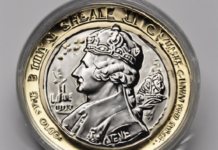The novel “Girl in Pieces” by Kathleen Glasgow is a poignant and raw exploration of trauma, self-harm, and the journey to recovery. At the center of the story is Charlie Davis, a teenage girl struggling to survive after a series of traumatic events leave her shattered and broken. As we follow Charlie’s journey through the pages of the book, we are confronted with the complexity of her character, the depth of her pain, and the resilience of her spirit. In this blog post, we will dissect the character of Charlie Davis in “Girl in Pieces,” examining her motivations, her relationships, and the ways in which she ultimately finds healing and redemption.
The Complexities of Charlie Davis
Charlie’s Trauma: From the very beginning of the novel, it is clear that Charlie has experienced significant trauma in her life. She has a history of self-harm, which serves as a coping mechanism for her pain. The scars on her body are a physical manifestation of the emotional wounds that she carries with her every day. As we delve deeper into Charlie’s past, we learn about the abuse, neglect, and loss that have shaped her into the person she is.
Charlie’s Silence: One of the most striking aspects of Charlie’s character is her silence. She is a girl of few words, preferring to keep her thoughts and feelings to herself rather than share them with others. This silence is both a source of strength and a barrier to healing. It is through her relationships with other characters in the novel that we see Charlie begin to find her voice and speak her truth.
Charlie’s Resilience: Despite everything she has been through, Charlie possesses a remarkable resilience. She endures hardship after hardship, yet somehow manages to keep going. This resilience is not born out of a lack of pain, but rather out of a fierce determination to survive and eventually thrive.
The Relationships That Shape Charlie
Blue: Blue is one of the most important relationships in Charlie’s life. He is a fellow patient at the treatment center where Charlie goes to recover, and he quickly becomes a source of comfort and support for her. Blue sees Charlie for who she truly is, scars and all, and accepts her without judgment. Their relationship is built on trust, empathy, and a shared understanding of the pain they have both experienced.
Riley: Riley is another key figure in Charlie’s journey. He is a musician who becomes romantically involved with Charlie, offering her a glimpse of what love and connection can feel like. Riley is patient and kind, helping Charlie to see herself in a new light and challenging her to believe in the possibility of a better future.
Charlotte: Charlotte is Charlie’s estranged mother, whose own struggles with addiction and mental illness have had a profound impact on Charlie’s life. Throughout the novel, we see Charlie wrestling with her feelings towards her mother, vacillating between anger, longing, and forgiveness. Charlotte’s presence looms large in Charlie’s story, serving as a constant reminder of the generational cycle of trauma that she is trying to break.
The Path to Healing for Charlie
Therapy and Treatment: One of the first steps on Charlie’s journey to healing is seeking out professional help. She attends a treatment center for girls with similar struggles, where she is able to participate in therapy, group sessions, and other forms of support. Through these interventions, Charlie begins to unpack her past traumas, learn healthy coping mechanisms, and envision a future free from self-harm.
Creative Expression: Another important aspect of Charlie’s healing process is her artistic talent. Charlie is a gifted painter, and through her art, she is able to express emotions that are too difficult to put into words. Painting becomes a form of release for Charlie, a way to externalize her pain and transform it into something beautiful.
Self-Discovery: As Charlie navigates her way through recovery, she embarks on a journey of self-discovery. She confronts her past, confronts her fears, and confronts her own inner demons. Along the way, she begins to uncover her own strength, her own resilience, and her own capacity for healing. Charlie’s journey is not linear; there are setbacks and struggles along the way. But ultimately, she learns that healing is not about erasing the past, but about finding a way to live with it and move forward.
Frequently Asked Questions (FAQs)
Q1: What is the significance of the title “Girl in Pieces”?
A1: The title “Girl in Pieces” refers to Charlie’s fragmented state of being at the start of the novel, as well as the process of piecing herself back together throughout the story.
Q2: How does self-harm impact Charlie’s character development?
A2: Self-harm serves as both a coping mechanism and a symbol of Charlie’s deep emotional pain, shaping her character arc and influencing her relationships with others.
Q3: What role do other characters play in Charlie’s healing journey?
A3: Other characters, such as Blue, Riley, and Charlotte, provide support, love, and challenges that help Charlie confront her past and move towards healing.
Q4: How does art therapy contribute to Charlie’s healing process?
A4: Art therapy allows Charlie to express her emotions in a healthy way, process her trauma, and discover new aspects of herself through creative self-expression.
Q5: What themes are explored in “Girl in Pieces” besides trauma and recovery?
A5: The novel also delves into themes of love, friendship, addiction, mental illness, family dynamics, and the search for identity and belonging.
In conclusion, “Girl in Pieces” is a powerful and gut-wrenching novel that offers a deeply human portrait of a young girl’s struggle to overcome trauma and find healing. Through the character of Charlie Davis, we are reminded of the resilience of the human spirit, the complexities of healing, and the importance of connection in the journey towards wholeness. As we accompany Charlie on her path to recovery, we witness the transformative power of vulnerability, self-acceptance, and the courage to confront our deepest wounds.





